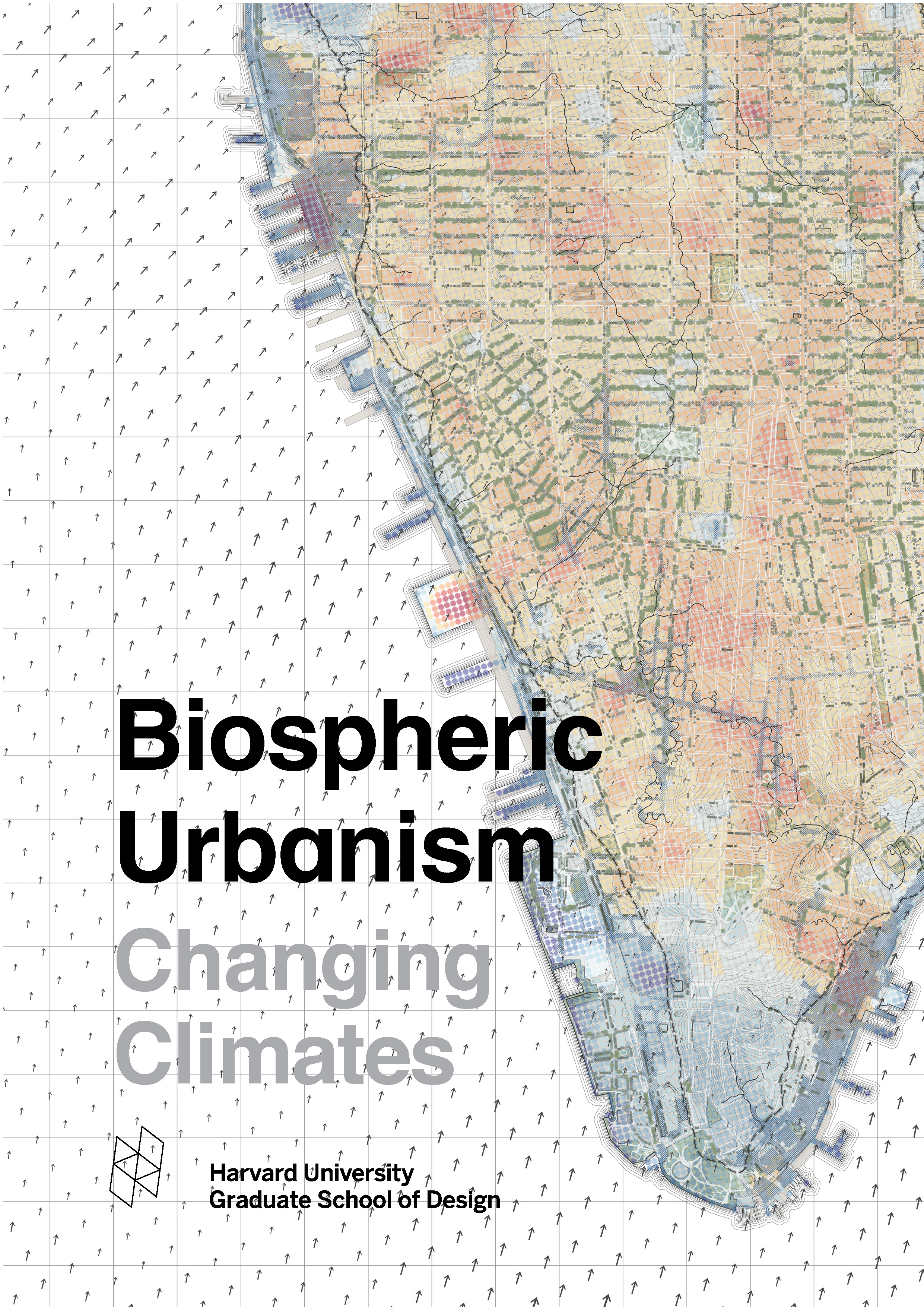
Harvard Graduate School of Design Combined Projects
Biospheric Urbanism: Changing Climate
Harvard Graduate School of Design
Biospheric Urbanism: Manhattan
The five projects exhibited here were chosen from one studio under the direction of Professor in Practice Bas Smets, because they concisely represent the positioning of the Department of Landscape Architecture: Directly facing climate adaptation and environmental justice at all scales.
Critical Moment
The climate crisis poses the urgent question of how to make cities more resilient to atmospheric changes such as heat islands, rising temperature, intensified rainfall, atmospheric river events, and more severe droughts. This unprecedented crisis represents an opportunity, and equally a responsibility, for landscape architecture to radically rethink its field.
The City as a Myriad of Microclimates
Cities account for over 70% of global carbon dioxide emissions worldwide, while taking up around 3% of the land space. Therefore, cities present a crucial opportunity to combatting the causes and mitigating the impacts of climate change. We understand the city as an imbrication of myriad microclimates. Buildings change wind patterns and sunlight exposure, while the streetscapes define soil permeability, runoff, and radiation.
Biospheric Urbanism
Biospheric Urbanism studies the built environment as the interface between meteorology and geology. It uses the logics of nature to transform the critical zone above and below the city surface.
Studio Prompt
The Biospheric Urbanism Studio is planned for five cities, globally. The first project, in Manhattan, is composed of three acts: mapping climate data, choosing a project based on mapped conditions, and transformation of the site as a modified microclimate. Innovative climate software and modeling techniques are standard for the course.
